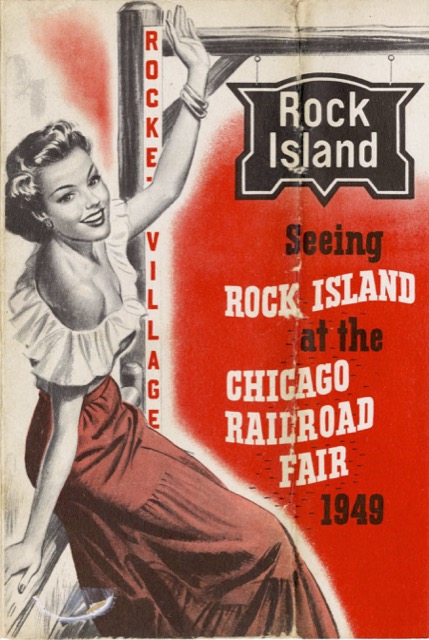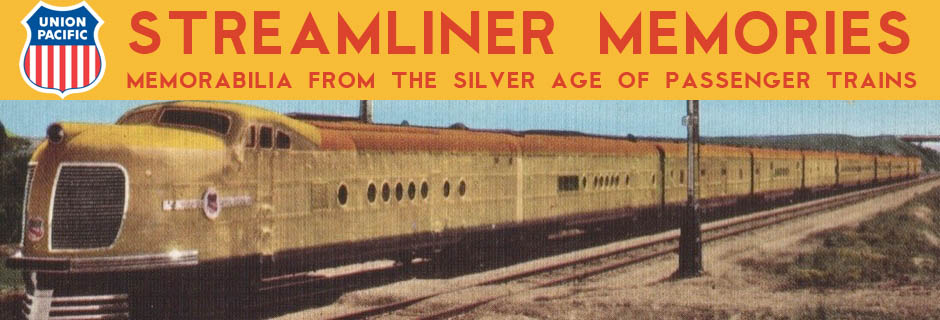At first glance, this brochure appears to be a guide to Rock Island’s exhibit at the 1949 Chicago Rail Fair. But actually only one fourth of the brochure is about that exhibit; the 1949 Rail Fair program actually said more about the exhibit–that it had a square dancing pavilion, Southwest-themed live music, a replica of an 1880s dining car as well as the Rock Island’s latest diner, and a movie theater–in one-quarter page than this entire brochure. Rock Island was one of several railroads at the fair that offered food services in their own diners.
 Click image to download a 3.1-MB PDF of this brochure.
Click image to download a 3.1-MB PDF of this brochure.
The rest of this brochure advertises the Rock Island railroad: passenger trains, freight trains, operations, scenic destinations, and the latest right-of-way improvements. The connection between rockets and the Southwest was made in a note that New Mexico is the location of the White Sands Proving Grounds where “scientists are experimenting with aerial rockets” even as Rock Island’s “Diesel-powered Rockets are a down-to-earth reality.”

“Huge diesel powered ROCKETS”….”Streamlined”…”aerial rockets”…It seems like we’ve lost the excitement and optimism of 1949 somewhere along the way on our trip to 2017.
The Rock used some tricky language in this brochure. Their railroad never even got close to White Sands but it was on the Golden State passenger train route, so it wasn’t exactly not true. The SP, which did get close to White Sands, never got closer than Alamogordo, 13 miles NE of town. In reality, White Sands wasn’t on any railroad’s mainline.
I suppose that there hadn’t been much time since the war to build many civil engineering improvements, so the Rock featured Sampson of the Cimarron, a truly massive bridge, but it was completed in 1939, a full ten years before the 1949 fair. It had been featured frequently in prewar publications so it wasn’t exactly anything new, but it would have to do. It’s not in Liberal either, but 13 miles NE of there. If you get a chance, it’s worth the drive to see what looks like a massively overbuilt bridge. When the Cimarron is in flood, you can see why it’s built that way.
The picture of the boxcar with the reflective dots at headlight level was something that really was well in advance of its time. It doesn’t say what they are made of other than “reflective material”, but I think 3M had come out with reflective tape by 1949, maybe even earlier. It wasn’t until decades late (2004 to be exact) that the FRA mandated that all rolling stock have reflective striping applied. The railroads had 10 years from 2005 to get it done so, by 2015, everything should have been completed. I still see an occasional freight car that doesn’t have striping, but they are old, and I assume the railroads have some kind of waiver for cars soon to be retired.
Regards, Jim